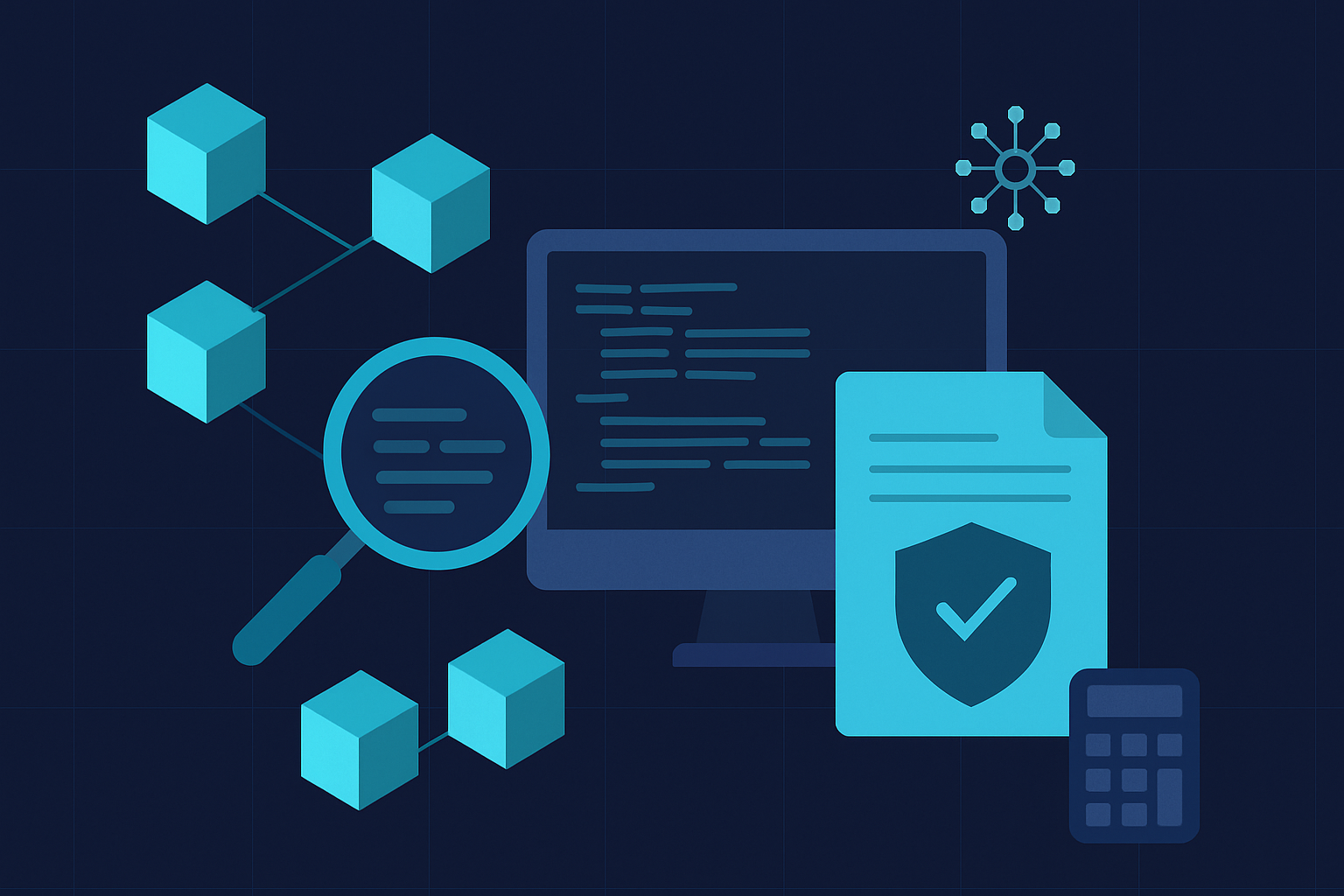Smart Contract Auditing: How Long It Takes and What to Expect Step-by-Step

Strong 8k brings an ultra-HD IPTV experience to your living room and your pocket.
Smart contracts are the backbone of decentralized applications (dApps) in the blockchain ecosystem. Whether it's DeFi protocols, NFT platforms, or DAO governance systems, smart contracts automate and secure digital agreements. However, the immutable nature of blockchain also means that any bugs or vulnerabilities in smart contracts can lead to irreversible financial losses or system failures. That’s why smart contract auditing has become a critical phase in the lifecycle of any blockchain project.
One of the most frequently asked questions by developers, project founders, and investors alike is: “How long does it take to audit a smart contract?” The answer is not always straightforward and depends on various factors. This blog explores the timeline, stages, and intricacies involved in smart contract auditing.
Understanding the Importance of Smart Contract Audits
Before diving into the time it takes to perform an audit, it's essential to understand why smart contract auditing is necessary in the first place. Unlike traditional software, smart contracts run on blockchain networks, which means their code is often public and immutable. Once deployed, it cannot be easily altered or patched.
This makes them prime targets for hackers and bad actors who look for any vulnerabilities to exploit. Over the years, high-profile attacks on DeFi platforms and NFT marketplaces have caused millions of dollars in losses due to poorly written or unaudited smart contracts. Therefore, a comprehensive smart contract audit isn't just a formality — it's a fundamental requirement to ensure the security, functionality, and reliability of decentralized systems.
What Is Smart Contract Auditing?
Smart contract auditing is the process of reviewing and analyzing the code of a smart contract to identify security issues, bugs, inefficiencies, or deviations from expected behavior. It typically involves a combination of manual review, automated analysis, and formal verification methods to ensure the code behaves as intended.
Auditors focus on common vulnerabilities such as reentrancy attacks, integer overflows, denial-of-service attacks, gas inefficiencies, and access control flaws. The audit also examines compliance with best practices and alignment with the project’s documentation or whitepaper.
Factors Influencing Audit Duration
The time required for smart contract auditing is not fixed and can vary significantly depending on several key factors:
1. Code Complexity
Simple token contracts based on standard templates like ERC-20 or ERC-721 generally require less time to audit, as they follow well-known patterns and have fewer moving parts. On the other hand, complex smart contracts involving staking mechanisms, decentralized governance, flash loans, or cross-chain functionalities can take significantly longer due to the intricacy of the logic.
2. Codebase Size
The larger the codebase, the longer it will take to conduct a thorough audit. Projects with multiple interconnected contracts and thousands of lines of code naturally require more effort than a standalone contract with a few hundred lines.
3. Documentation Quality
Well-documented code can expedite the audit process. If the auditors have access to clear documentation, including design decisions, test cases, and architecture diagrams, they can more quickly understand the logic and intended behavior of the contracts.
4. Testing and Code Coverage
If the project already includes comprehensive test suites with high code coverage, the auditing team can use these tests to validate behavior quickly. Projects lacking tests will require the auditors to create their own, which adds time to the process.
5. Team Coordination and Communication
The ability of the development team to promptly answer questions, clarify intentions, and fix identified issues directly affects how quickly the audit can be completed. Delays in communication often result in extended audit timelines.
6. Number of Audit Iterations
Many audits involve multiple rounds. After the initial audit, developers fix the identified issues and resubmit the code for a second or third round of verification. Each iteration adds time to the overall process.
Average Timeframes for Smart Contract Auditing
While the duration varies, some general timelines can be provided based on industry standards:
Small projects or simple token contracts: 2 to 5 days
Moderate complexity dApps: 1 to 2 weeks
Complex DeFi protocols or DAOs: 3 to 4 weeks
Enterprise-grade blockchain applications: 1 to 2 months or longer
These timeframes assume that the code is relatively clean, documentation is sufficient, and the development team is responsive. Unforeseen issues like poorly written code or lack of documentation can add significant delays.
The Smart Contract Auditing Process: Step-by-Step
Step 1: Pre-Audit Preparation
Before the actual audit begins, the auditing firm typically requires the full source code, deployment plans, configuration files, and relevant documentation. At this stage, a kickoff meeting may be scheduled to align expectations, discuss timelines, and understand the contract’s functionality.
The auditors may also evaluate the completeness of the codebase and verify if the project is production-ready. This step ensures that the audit team works on the final version of the contract code rather than something that is still evolving.
Step 2: Automated Analysis
The audit typically starts with static analysis tools that scan the codebase for common vulnerabilities, code smells, and known issues. Tools like Slither, MythX, and Oyente are frequently used for this purpose. These tools can quickly identify patterns or functions that are susceptible to attacks or inefficiencies.
However, automated tools have limitations. They can produce false positives or miss context-specific logic errors. Therefore, this step is just a preliminary filter to guide deeper manual investigation.
Step 3: Manual Code Review
Manual review is the heart of any smart contract audit. During this phase, experienced security professionals go through the code line-by-line to analyze logic, assumptions, edge cases, and potential attack vectors. They simulate different scenarios, such as malicious inputs or abnormal states, to test the robustness of the contract.
This step often reveals complex logical bugs or vulnerabilities that are missed by automated tools. Manual audits also evaluate business logic to ensure that it aligns with the intended functionality described by the project team.
Step 4: Testing and Simulation
Auditors may also use unit testing, fuzz testing, and symbolic execution to simulate how the smart contract behaves under different conditions. In some cases, they create adversarial test cases to mimic potential attacker behaviors.
This step is particularly important for DeFi protocols or any smart contract that deals with financial transactions. Simulations help in identifying issues like front-running attacks, flash loan exploits, or improper liquidity handling.
Step 5: Reporting
Once the review is complete, the auditing team generates a comprehensive report that includes:
A summary of the audit findings
A detailed list of issues (categorized by severity: critical, major, medium, low, informational)
Recommendations for remediation
Notes on best practices and gas optimizations
This report is usually shared with the development team privately first, giving them a chance to fix the issues before any public disclosure.
Step 6: Remediation and Re-audit
The development team fixes the reported vulnerabilities and submits the revised code for a re-audit. In this phase, the auditing firm checks whether the identified issues have been adequately addressed and if any new issues have been introduced.
This process may be repeated in multiple rounds until all high-severity issues are resolved, and the code meets the required standards for security and functionality.
Step 7: Final Report and Disclosure
After successful remediation, a final audit report is prepared and often published on the project’s website or GitHub repository. This enhances transparency and trust among users and investors.
In some cases, the audit report may also include auditor comments on code maintainability, governance mechanisms, and upgradability patterns, depending on the scope of the engagement.
Post-Audit Considerations
Even after a successful audit, it's important to understand that no audit can guarantee absolute security. New attack vectors are constantly emerging, and the dynamic nature of blockchain ecosystems means that previously secure code can become vulnerable over time.
For this reason, projects are advised to:
Conduct periodic re-audits
Run bug bounty programs
Monitor contract behavior after deployment
Use upgradeable contracts with caution
Additionally, involving multiple auditing firms or independent reviewers can improve overall confidence in the security of the smart contracts.
Conclusion
Smart contract auditing is a meticulous and essential process that plays a critical role in ensuring the security and reliability of blockchain applications. The time it takes to audit a smart contract can range from a few days to several weeks or even months, depending on the code complexity, documentation quality, and audit scope.
While many hope for quick audits, rushing through the process can lead to catastrophic consequences. Thorough preparation, clear documentation, and collaborative communication with auditors can help streamline the process while maintaining high security standards.
Ultimately, smart contract audits are not just a checkbox in a development workflow—they are a cornerstone of building trust, reducing risk, and fostering innovation in the decentralized world.
Note: IndiBlogHub features both user-submitted and editorial content. We do not verify third-party contributions. Read our Disclaimer and Privacy Policyfor details.







